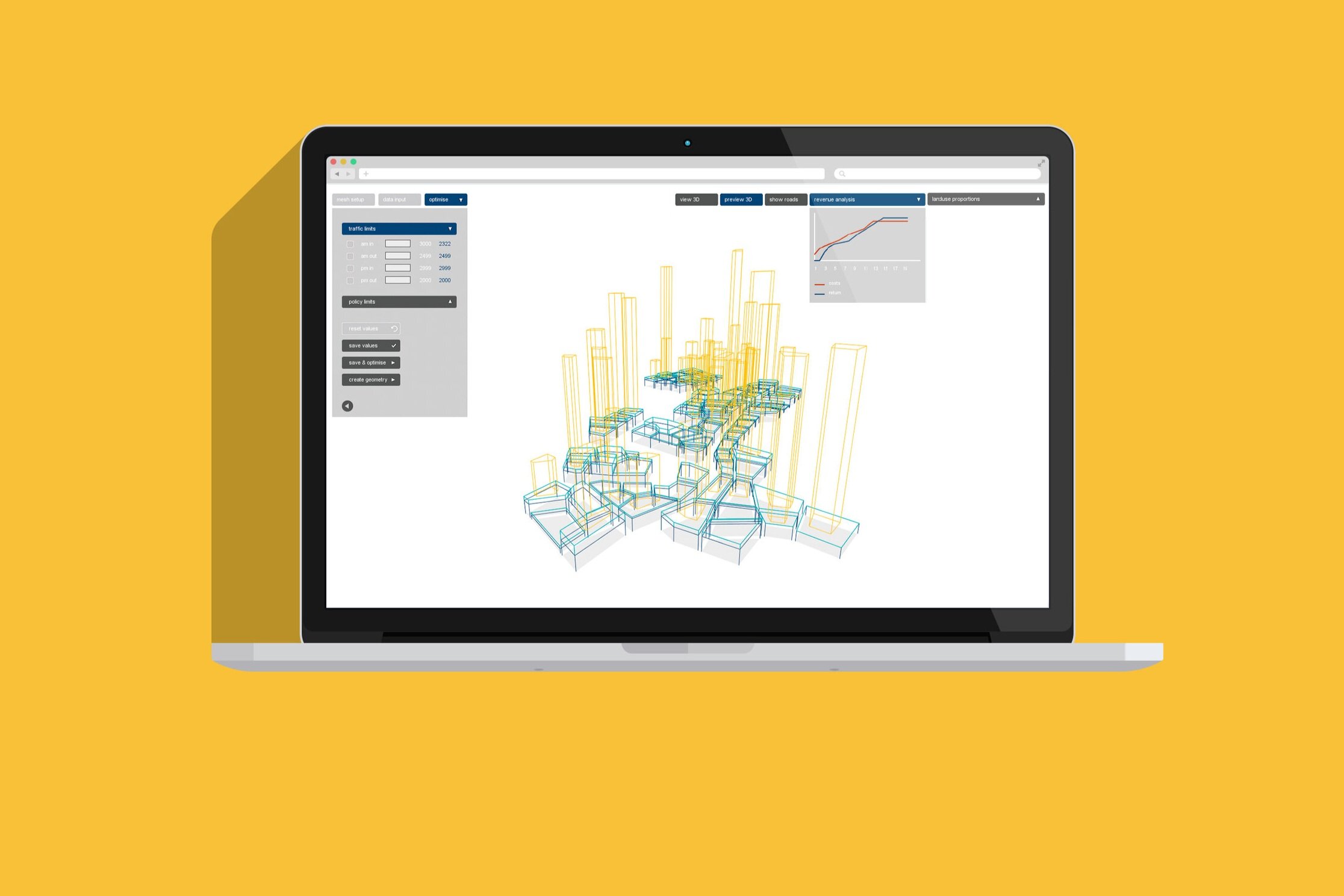Relational urbanism
Developing a computational model
A ‘Relational Urban Model’ (RUM) is a dynamic model built for guiding discussions and negotiations about redevelopments in emerging economies. The built-in optimisation algorithm finds a balance between maintaining the existing social infrastructure, optimising a developers revenue and staying within the policies of local authorities. As an interface, the RUM communicates between design software like grasshopper, rhino and space syntax, through data sheets and optimisation macro’s in excel - running in the background.


The RUM is developed for ARUP’s Global Research Challenge, after Relational Urbanism submitted the winning proposal.
As RU is a small company, my job involved both the design and development of the system and user interface. This required continuous collaboration with the architects working with parametric design tools, and understanding of the excel models the traffic experts work with. I made sure the concept of including social parameters would maintain a relevant parameter in the software. Together with local students, we conducted research to the sites in Shenzhen and Florianopolis, feeding into the algorithm back in London.
Where, when London, 2013 - 2014
While working for Relational Urbanism, Arup
Team Enriqueta Llabres, Eduardo Rico, Javier Serrano Hernando, Carlos Castillo, Junghyun Woo
Published Codify: parametric and computational design in landscape architecture, by Bradley Cantrell and Adam Mekies